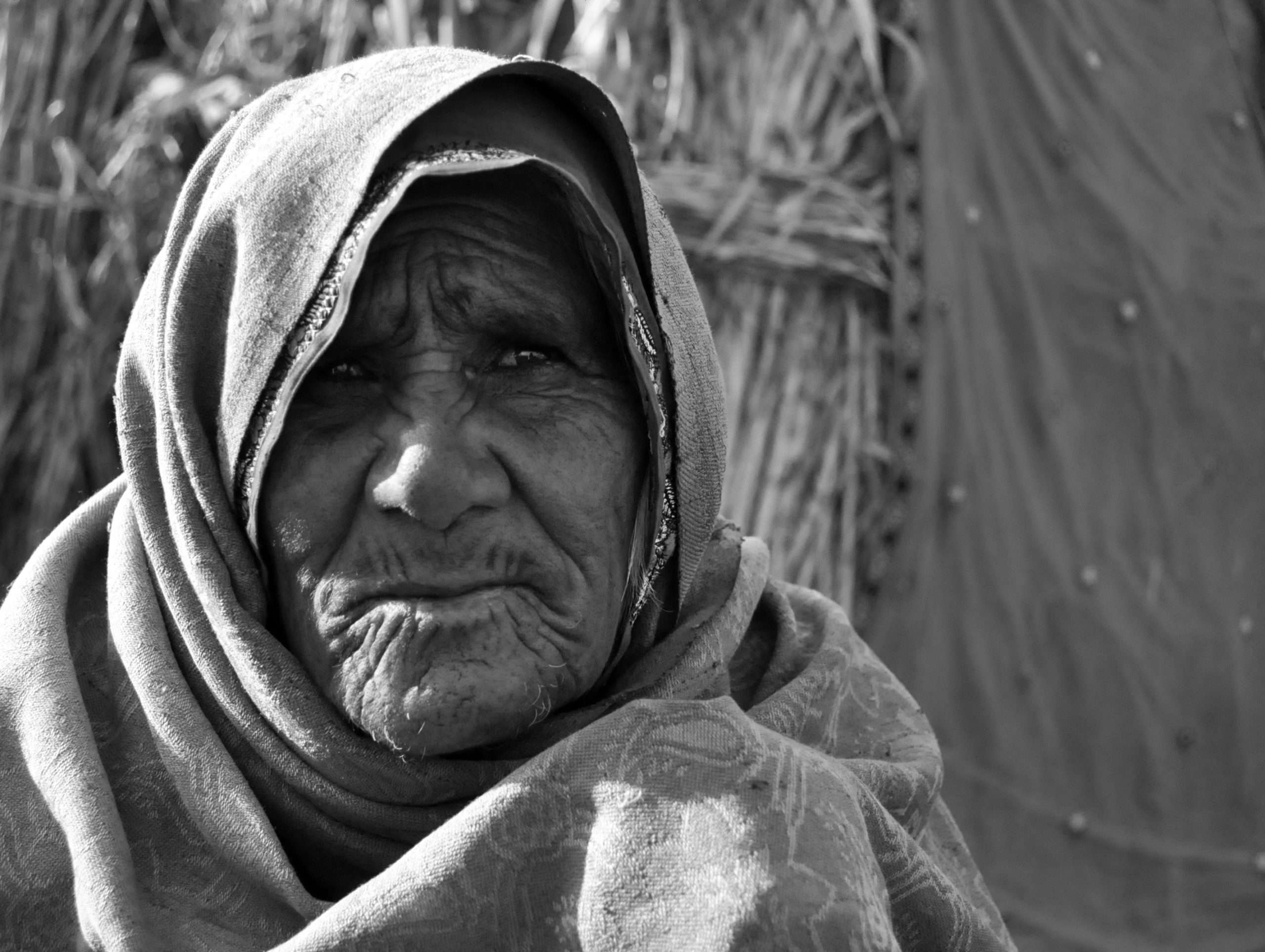As an immigrant, I often feel blessed to have two of everything. Two languages that I can use to communicate, two cuisines that I get to enjoy, two sets of festivals that I have the privilege of celebrating every year, two types of music and dance forms I learned growing up and two sets of historical figures who I learned from throughout my life. My attachment to both countries, however, extends beyond the culture to its people as well. As a student in medicine, I especially take an interest in the medical issues that people of both countries commonly face.
This photograph, taken in a small village near the Thar Desert in India, signifies to me the lack of access to health care that is prevalent not only in the United States and India but also globally. I met the elderly woman in this photograph during a volunteer trip at a local hospital in the Thar Desert where I saw the locals travel upwards of 200 miles to reach the hospital. While getting to know her, she shared with me her sorrows specifically that she could not fully enjoy the birth of her great-grandchildren because her vision had been steadily deteriorating. A myriad of factors impacted her delay in receiving care, including lack of transportation to the hospital, the absence of a nearby physician who could diagnose her and the financial strain involved in receiving cataract surgery. This photograph represents what I envision a physician to be — aware that understanding a patient’s circumstances is equally important to understanding disease pathophysiology and that addressing barriers to care is as crucial as implementing treatment modalities.
Image credit: Custom image provided by the author for this Mosaic in Medicine piece. The subject of the photograph has given consent for publication of this image.

